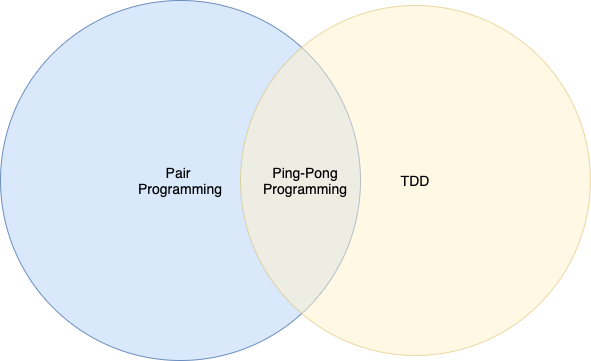Ping-Pong Programming
Where Pair Programming meets TDD
Aykut Bulgu
What Is Ping-Pong Programming?
Ping-Pong Programming (aka. Ping-Pong Pair Programming) is a kind of Pair Programming that TDD (Test Driven Development) is included while in practice. In other words, it is a combination of Pair Programming and TDD.

Why Do Ping-Pong Programming?
In addition to the Pair Programming's own benefits, Ping-Pong Pair Programming has the following advantages:
-
TDD :)
-
Easier to find the rhythm of the development flow which can be a problem when it comes to switching pairs.
-
A much smaller problem space needs to be managed, so this enables developers to sync with the flow quicker than other styles.
-
Avoids mismatched pair issues -like one developer knows more than the other- as each developer takes turns writing tests and making them pass.
-
The work is gamified, so it puts another kind of motivation for developers.
How to do Ping-Pong Programming?
Let's say there are two developers, developer A and developer B. The development flow goes like the following:
-
A writes a failing test.
-
B makes the test pass writing only enough code to make the test pass.
-
B writes the next test.
-
A writes only enough code to make that test pass.
-
Continue until A and B both agree that there are no more tests for the unit they are currently working on.
-
Either developer can refactor the code only all tests stays "passing".
The optimal setup to work in this rhythm is two developers sitting side by side, a single computer with two input devices: That’s two monitors, two keyboards, and two mice. However, developers may do pairs remotely if they work in a remote environment via tools like Live Share etc.
Ping-Pong programming can also be done in a group which is a form of Mob Programming. So it can be called Ping-Pong Mob Programming:
-
A developer writes a failing unit test.
-
Another developer -maybe the one next to her/him- writes as little code as possible to make the test pass.
-
Another developer -maybe the one next to her/him- writes a failing unit test. And it continues like this...
-
Any developer can refactor any code when needed but only when the tests pass.
-
When the driver asks for help, the rest of the group politely helps out without any other interruption.
Look at Ping-Pong Programming
Links we love
Check out these great links which can help you dive a little deeper into running the Ping-Pong Programming practice with your team, customers or stakeholders.
